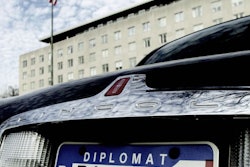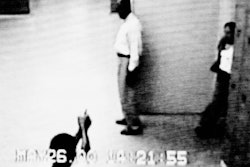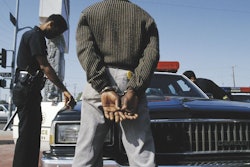It was March 21, 2:55 p.m., spring was in the air in the remote north woods of Minnesota, and the students of Red Lake High School were anxiously awaiting the sound of the bell. What they heard instead was explosions out in the hallway.
The explosions were the booming reports of a 12-gauge shotgun being used to murder school security guard Derrick Brun, 28. Brun was unarmed, yet he tried to stop the shooter.
The gunman was Jeff Weise, a 17-year-old Red Lake High student who was out to “Columbine” his school. Earlier that afternoon Weise had killed his grandfather—a 58-year-old Tribal Police officer—and his grandfather’s girlfriend, stolen his grandfather’s guns and ballistic police vest, and driven to his school.
By the time Weise’s rampage ended at approximately 3:05 p.m., he had killed nine people, including himself, and wounded as many as 14, seven seriously.
As terrible as the “Red Lake Massacre” was, it could have been much worse. Weise was heavily armed with weapons and ammunition, he wanted a high body count, and he offered his fellow students no more compassion than most people would give the mechanical ducks at a shooting gallery. He would have kept shooting, as long as he had ammo. And no one inside the school was equipped to stop him.
Fortunately, the one thing the students and teachers in the school were able to do was call the Tribal Police.
The Red Lake Tribal Police Department is a small agency of 22 sworn officers. It doesn’t have a lot of tactical resources. However, it does have dedicated officers who were willing to put themselves in harm’s way to stop Weise.
Red Lake Director of Public Safety Pat Mills says he takes great pride in the fact that his officers reacted quickly and decisively to the active-shooter incident. “I can’t praise these officers enough,” he says. “They realized that they couldn’t wait for a tactical team, and they did exactly what they were trained to do.”
Police training is exactly why Weise did not inflict a higher toll of blood and pain on his classmates. When they learned of the massacre in progress, the Tribal Police knew what to do because, in a way, they had done it before.
Two years ago Red Lake Tribal Police officers participated in an active-shooter drill at Red Lake High. It was force-on-force training with an actor playing the bad guy, actual students playing victims, and even a little stress inoculation provided by exploding firecrackers that were used to simulate gunfire. In that training exercise, the cops rushed into the school with unloaded weapons, covered each other, moved to the sound of the shooting, and ended the incident.
On March 21, they rushed into the school just as they had in training. But this time with loaded weapons, M4 carbines to be exact. They located the shooter quickly, exchanged fire with him (teaching him a lesson about .223 rounds vs. Kevlar), and forced him to retreat into a classroom where he took his own life.
One moral of this story is that good, realistic police training can save lives. The other is that patrol rifles are a must in an active-shooter situation. No one knows what would have happened at Red Lake High School if the local police had only been armed with handguns and shotguns. But odds are, the responding officers and possibly more civilians would have been wounded or killed.
Tell your administrators about Red Lake when they want to slash your training budget or limit your armed response to just duty pistols.
Fighting Fire with Fire
It was March 21, 2:55 p.m., spring was in the air in the remote north woods of Minnesota, and the students of Red Lake High School were anxiously awaiting the sound of the bell. What they heard instead was explosions out in the hallway.











